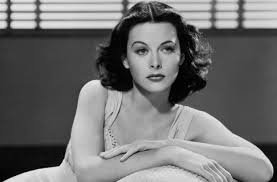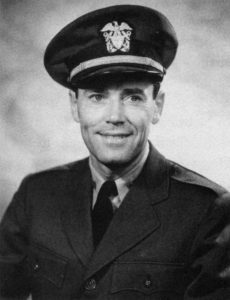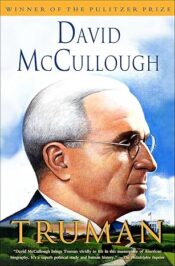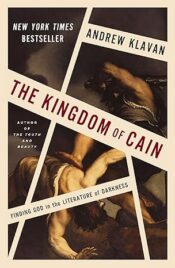
City of Nets
The City of Nets by Otto Friedrich
Individuals of a certain age will enjoy The City of Nets. A certain age refers to growing up when Hollywood was doing the same. Younger readers with a bent for old films will enjoy the book as well. It is not new ((published in 2014) but readers continue to seek it out. And for good reason, The City of Nets is funny, poignant, historically accurate and totally engrossing.
Ben David Gold1, in the Foreword, disputes the assertion on the book’s cover that it is history of Hollywood in the 1940s.
It’s so much more than that—it’s a genuine epic in the sense of its being a creation myth, with sex and violence and humor and, above all else, resonance. You can’t read this book without seeing the hidden rooms of the 1940’s that gave us the culture we have today…
The fantasy characters Hollywood projected on the screen were not as improbable as the people who transformed a California desert into an oasis of dreams, beguiling the nation and the world. By 1939… the film studios had become the nation’s eleventh largest industry.
They created some four hundred new movies every year, attracted more than 50 million Americans to the theater every week and grossed nearly $700 million annually.
Those who took part in that achievement included refugees from Nazi Germany. Destitute writers, musicians and actors found jobs in Hollywood when America, always a haven for the dispossessed, was awash in them.
By contrast, the men who hired the likes of Thomas Mann, Igor Stravinsky, and Arnold Schoenberg were not intellectuals, or even talented amateurs. They were mostly semi-literate, foreign borne entrepreneurs who grabbed opportunity when they saw it in America’s growing appetite for moving pictures. Among the producers who became legends in their own minds and time were Samuel Goldwyn, Harry Warner, Harry Cohn, Louis B. Mayer, and David O. Selznick. They were professional showmen only in the sense that Barnum and Bailey were.
 Friedrich provides biographical sketches of some of the individuals who are part of the Hollywood story; Charlie Chapman, Jackie Cooper, Veronica Lake, Gene Tierney, Hedy Lamarr and Raymond Chandler among others. Readers will find these stories pathetic, salacious, humorous and even heroic.
Friedrich provides biographical sketches of some of the individuals who are part of the Hollywood story; Charlie Chapman, Jackie Cooper, Veronica Lake, Gene Tierney, Hedy Lamarr and Raymond Chandler among others. Readers will find these stories pathetic, salacious, humorous and even heroic.
Perhaps the most intriguing pages are devoted to the way casting decisions were made for some of Hollywood’s biggest hits. Vivian Leigh, for example, was not David Selznick’s first or even fourth choice to play Scarlett O’Hara in Gone With The Wind. Yet, she is still remembered for her performance in the movie that catapulted her career. Conversely, Many of the famous talents in Hollywood never seemed to recognize a good idea when it was proposed to them. Alan Ladd, Paramount’s biggest star, would not touch the role of Walter Neff in Double Indemnity. Fred Mac Murray, convinced it would ruin his career, was tricked and manipulated by Director Billy Wilder into playing the best role of his life. Barbara Stanwyck was similarly bullied into playing the female lead in what turned out to be her best film.
Culture, Politics and Commerce
The City of Nets is equally a cultural and political history. The story of filmmaking and the “Hays Office,†(Production Code Administration) is not well known today. Censorship was a problem Hollywood struggled with, but on occasion could evade it by using an amusing combination of chicanery and misdirection.
Politics and commerce became Hollywood partners when, (prior to America’s entry into WW2), studio bosses followed directives from the Roosevelt administration to avoid anti-Nazi sentiment in films. The government’s motives were geopolitical; the Studio moguls’ calculus was financial. They were happy to comply and avoid offending the lucrative foreign film market.
 After America entered WW2, Hollywood quickly abandoned its reticence to expose the evils of National Socialism. The studios produced many films to bolster the war effort, some of them memorable. After Pearl Harbor, actors such as Charlton Heston, Jimmy Stewart, Tony Curtis and Henry Fonda, and others, signed up to go to war.
After America entered WW2, Hollywood quickly abandoned its reticence to expose the evils of National Socialism. The studios produced many films to bolster the war effort, some of them memorable. After Pearl Harbor, actors such as Charlton Heston, Jimmy Stewart, Tony Curtis and Henry Fonda, and others, signed up to go to war.
During 1947, in a shameful display of cowardice, most studio bosses took a “go along to get along†attitude toward the House Un-American Affairs Committee’s indiscriminate targeting of actors and writers. After first promising their employees would retain their jobs if they testified, the studios fired them.2
The End of an Era
The glory days, described by Friedrich, have been over for a long time; today digital media provides other entertainment and options. The economic shut down, provoked by the Covid Virus, underscored the utility and convenience of those alternatives. Whatever happens next is not likely to bode well for the city of dreams.
A personal aside:
When I was growing up it was possible to ride a streetcar to the Riverside Theater in downtown Milwaukee, buy a ticket, one confection, and still have enough allowance to ride home. To buy a ticket I first had to satisfy the cashier that I was under age 12, for which purpose I brought my birth certificate. I was a regular but she persisted in thinking I was too tall to qualify.
The Riverside was a magic place. It had red plush curtains, a gilt ceiling, ushers and seats large enough to curl up in. I spent Saturday afternoon’s mesmerized by the flickering screen, and in awe of the big bands and glamorous singers who filled the stage after the feature. I learned to hide in the lady’s room until the lights went down and I could sneak back in to see the movie again.
To paraphrase a famous line, there are many stories in the desert city and Otto Friedrich tells them exceedingly well. But for me, Hollywood will always be the magical place that made those wonderful Saturday afternoons possible.
1. Glen David Gold wrote Sunnyside and Carter Beats the Devil.
2. Historical footnote: In 1948 the Committee discovered a real spy and sent Alger Hiss to prison for perjury when he lied about his communist affiliation and activities.
 The posts are coming!
The posts are coming!


0 comments
Kick things off by filling out the form below.
Leave a Comment